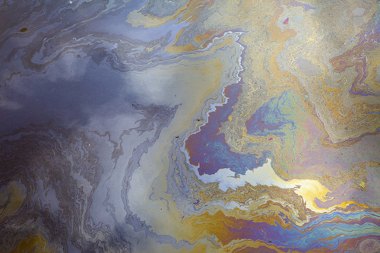Cooking oil is a liquid mainly used to fry food in large quantities. Unfortunately, in many cases, this cooking oil used in homes, bars and restaurants ends up being thrown down the sink or even in the toilets. Other people prefer to put it in a sealed container and dispose of it with common organic waste.
However, all these methods of disposing of used cooking oil are means of contaminating the environment and can pollute water, soil and even the atmosphere. See what the economic and environmental damages are when the consumer is not aware and improperly dumps used cooking oil into the sewer system or dumps:
When poured into the sink or toilet, the used oil passes through the sewer pipes and is retained in the form of fat. This is bad because it attracts pests that can cause various diseases, such as leptospirosis, typhoid fever, cholera, salmonellosis, hepatitis, schistosomiasis, amoebiasis and giardiasis. These diseases can be transmitted to humans and animals.
In addition, this oil encrusted in the pipes makes the passage of rainwater difficult and causes the leakage of water into the sewage network and its clogging, leading to malfunctioning of the treatment. For this reason, it is necessary to use polluting chemical products to unclog these installations, which leads to more pollution and more economic expenses.
This sewage contaminated with the disposal of used cooking oil reaches the Sewage Treatment Stations (ETEs), that will separate it from the water and treat it so that the water can be poured again into springs, such as rivers and lakes. However, this treatment carried out in the ETEs is not done with total sewage, but only with about 68%, which means that the oil ends up reaching water sources. In addition, the cost of this treatment is high, corresponding to around 20% of the cost of sewage treatment.
Since oil is less dense than water, it sits on the surface of rivers and lakes, keeping out light and oxygen. This causes the death of several aquatic species, such as phytoplankton (microscopic algae that live in rivers and seas and produce oxygen) that depend on light to develop and survive. This can have serious consequences, as phytoplankton are at the base of the food chain of aquatic ecosystems, serving as food for larger organisms that could also die. Furthermore, they are believed to produce about 98% of the oxygen in the Earth's atmosphere.
To get an idea, 1 liter of used cooking oil can pollute about 1 million liters of water, which is approximately consumed by one person in 14 years!

Used cooking oil can cause water pollution, preventing the entry of oxygen and light
Used cooking oil also reaches the soil, both through the margins of water sources and through the oil discarded in common garbage that ends up in dumps. The oil contaminates the soil and ends up being absorbed by the plants, harming them, in addition to affecting the metabolism of bacteria and other microorganisms that deteriorate organic compounds that become nutrients for the ground. It is also through infiltration into the soil that this cooking oil pollutes groundwater. Another resulting problem is that this used oil makes the soil impermeable and, when it rains, contributes to the emergence of floods.
In addition to soil and water, even the atmosphere ends up being polluted, because the decomposition of oil produces methane gas (CH4), which is a greenhouse gas, that is, it is capable of retaining the sun's heat in the troposphere, which increases the problem of global warming.
You must have realized the dangerous relationship that exists between used cooking oil and the environment. But then what to do with used cooking oil? Read the text below to find the answer:
- Recycling used cooking oil.
By Jennifer Fogaça
Graduated in Chemistry
Source: Brazil School - https://brasilescola.uol.com.br/quimica/oleo-cozinha-usado-meio-ambiente.htm
